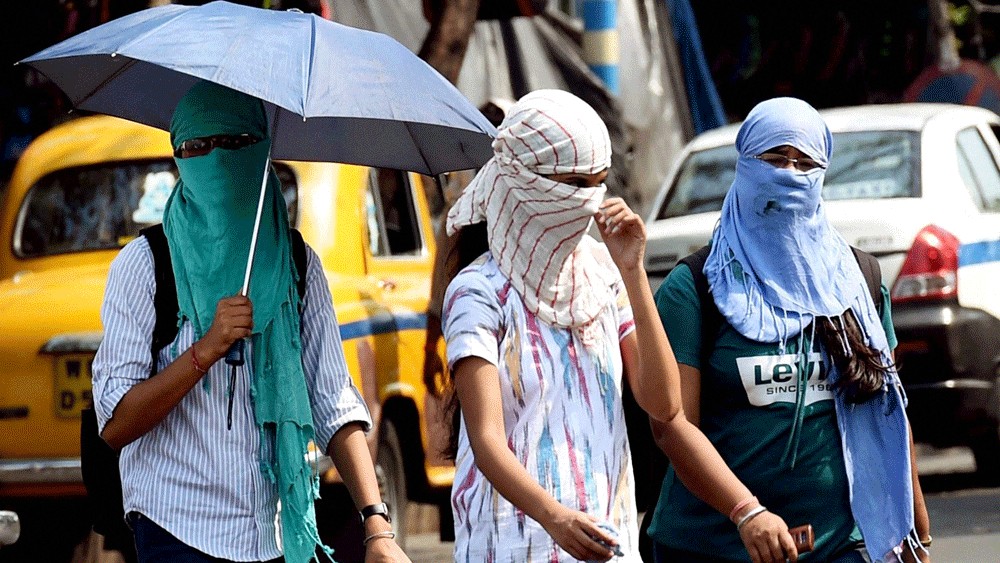
The study revealed that people in these cities are experiencing worsening heat stress due to the increased humidity.
Credit: PTI Photo
A study Decoding the Urban Heat Stress among Indian cities by the Centre for Science and Environment (CSE) analysed data from six major cities - Delhi, Kolkata, Chennai, Mumbai, Bengaluru and Hyderabad -- for about 23 years from January 2001 till April 2024.
The study revealed that people in these cities are experiencing worsening heat stress due to the increased humidity.
Apart from the highly increasing humidity, the study also showed that temperatures of land in these cities are not falling at the same rate as compared to earlier decades, making nights warmer.
Calling this phenomenon 'urban heat island' effect, the study explained it as trapped heat due to increase in diminishing green cover, heat generated from human activities, congestion, and absorption of heat by urban structures.
Due to this, megacities are much warmer at night in contrast to the city's outskirts or regions having more green cover.
According to a report by The Indian Express, one of the authors of the study and senior manager at Urban Lab, CSE, Avikal Somvanshi said, "Hot nights are as dangerous as mid-day peak temperatures. People get little chance to recover from day-time heat if temperatures remain high overnight."
The study revealed that the increase in air and land temperatures along with high humidity - the combination has led to increasing heat index and heat stress in these megacities.
(The measure of discomfort which is felt due to increased heat and humidity is known as heat index.)
The IMD in its forecast has detected no respite from heat for the next three days as a strong heat wave has been sweeping over Delhi, Haryana and Rajasthan currently.
The study noted that 18 heat wave days have been recorded in Odisha and 16 have been recorded in West Bengal.
In the past 10 years, according to the data of the CSE study, humidity in Hyderabad increased by 10 per cent in summers, Mumbai by 8 per cent, Kolkata by 7 per cent and Chennai by 5 per cent.
According to a report by Down To Earth, one of the authors of the study and senior manager at Urban Lab, CSE, Avikal Somvanshi said, "Addressing the combination of high heat and humidity is particularly important as this can compromise the human body’s main cooling mechanism: sweating. The evaporation of sweat from skin cools our bodies, but higher humidity levels limit this natural cooling."
According to the publication, "Increase in green cover shows impact on daytime temperatures but has no impact on nighttime temperature and increasing heat index in the city."
According to the study's analysis, during the monsoon season, the heat index in all these six cities rises.
Anumita Roychowdhury, Executive Director at Research and Advocacy, CSE said that analysation of heat trends is important to come up with thorough heat management plan for urban cities.
According to The Indian Express, she said, "This is needed to implement emergency measures during heatwaves to protect public health, and also to develop long term strategies to mitigate heat by increasing green areas and waterbodies, improving thermal comfort in buildings, and reducing waste heat from vehicles, air conditioners and industries."